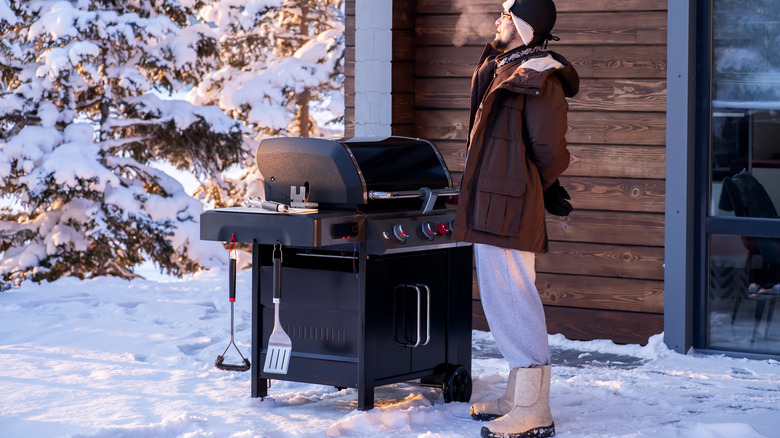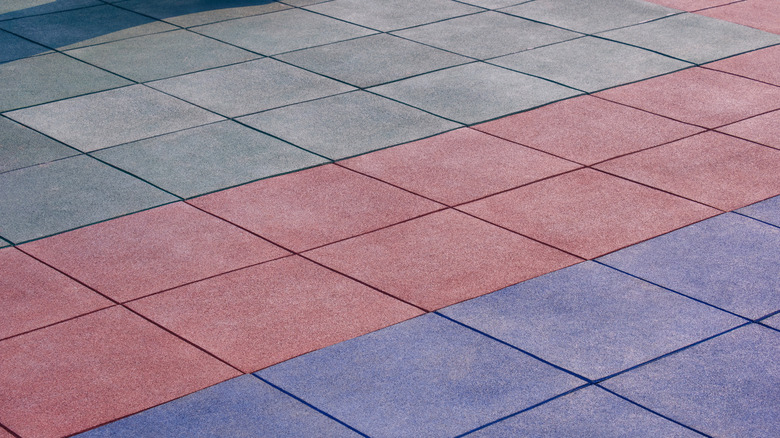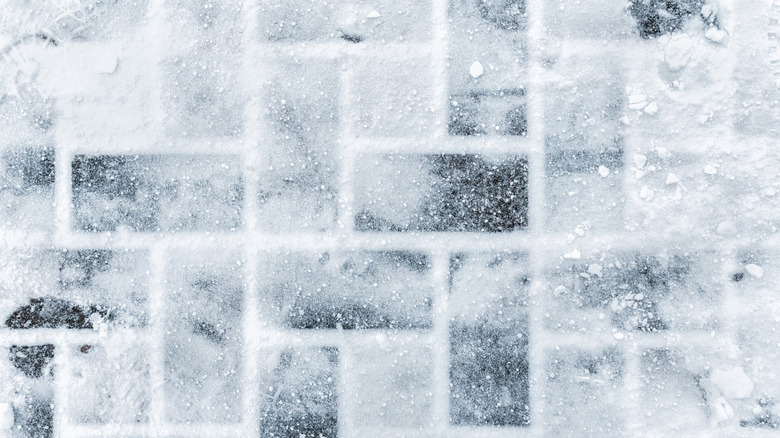The Best Backyard Patio Material For Cold Weather
When designing your outdoor patio, choosing your material is one of the most important decisions you'll make. With a range of options available, like brick, gravel, concrete, and more, there are a lot of factors that go into picking the ideal material for you. But if you live in a cold weather area, you should prioritize using materials that hold up well in your climate, such as natural stone and rubber.
Snow and ice aren't the main things that can wreak havoc on patios in cold climates. Instead, your biggest concern is the freeze-thaw cycle. This process will make the ground underneath your patio expand, and it can also do the same to your pavers. This can lead to damage like cracked, chipped, and even dislodged material. In addition, the freeze-thaw cycle can shorten your patio's overall lifespan. Look out for materials with low porosity that naturally hold onto less water because they will not be as affected by this cold weather cycle.
Amongst available options, natural stones like flagstone and bluestone are known for their ability to withstand freeze-thaw cycles. Flagstone is one of the best materials for an outdoor patio because of its overall durability. With proper care, flagstone can easily last decades, but it often comes in irregular shapes that may not appeal to you. If that's the case, you should consider a bluestone patio, as this blue-tinted material shares many of flagstone's qualities while also adding some luxury to your yard.
Another material to consider for cold weather
Although natural stones like flagstone and bluestone are great in cold weather, one of their biggest downsides is that they're known to hold onto heat. If your patio is in a shaded area or it doesn't get that hot where you are, this may not be a huge concern. However, it can be annoying to have to spray down your patio every time you want to go outside. To avoid these problems, you can also consider using rubber for your patio instead of natural stone.
Rubber pavers offer the benefit of holding up well in various weather conditions, including hot and cold weather. Unlike flagstone or bluestone, rubber doesn't really hold onto heat. In addition, rubber can withstand the freeze-thaw cycle, and it also offers the benefit of slip resistance. Because rubber drains water quickly, you don't have to worry about damage from erosion either. It also makes these surfaces less likely to allow for ice formation. All of these factors make rubber tiles an excellent choice for patios, pool decks, or even safe play areas for children.
Like natural stones, though, using synthetic pavers in the landscape comes with its drawbacks. For example, rubber tiles don't pack a lot of charm—they are man-made, and they look like it. They may also fade or experience color bleeding due to sun exposure or heavy rain. If aesthetics are a big deal for you, then you probably want to skip using rubber for your patio.
Tips to make your patio last in cold weather
Even if you pick a patio material that is cold-weather resistant, you need to ensure that you properly care for it. One of the most important things that you can do is seal your patio. This is especially useful when using porous materials like concrete in cold climates because a sealant offers your patio more defense against moisture. By preventing extra water from penetrating the surface, you'll minimize the effects of the freeze-thaw cycle and potentially save yourself from dealing with any cracks or chips.
The best way to apply sealer to your patio involves using a liquid spray, which isn't too difficult to do on your own. This must be done before winter, though, as the ideal conditions for application are between 50 and 90 degrees Fahrenheit, depending on the sealant that you choose. It's also important to thoroughly clean your patio with a pressure washer or scrub brush before applying a sealant. If you leave behind any dirt, hair, stains, or other residue, you'll be sealing that up as well.
With cold weather specifically, another thing to consider is the impact of ice melts. For example, rock salt, or sodium chloride, is a popular method for preventing ice formation on patios and walkways. However, it is a corrosive material that can cause damage to your patio's joints, bleach surfaces, or even make your patio flake depending on the material. To ensure that your patio lasts, you should look into ice melts you can use on patio pavers to prevent damage.


